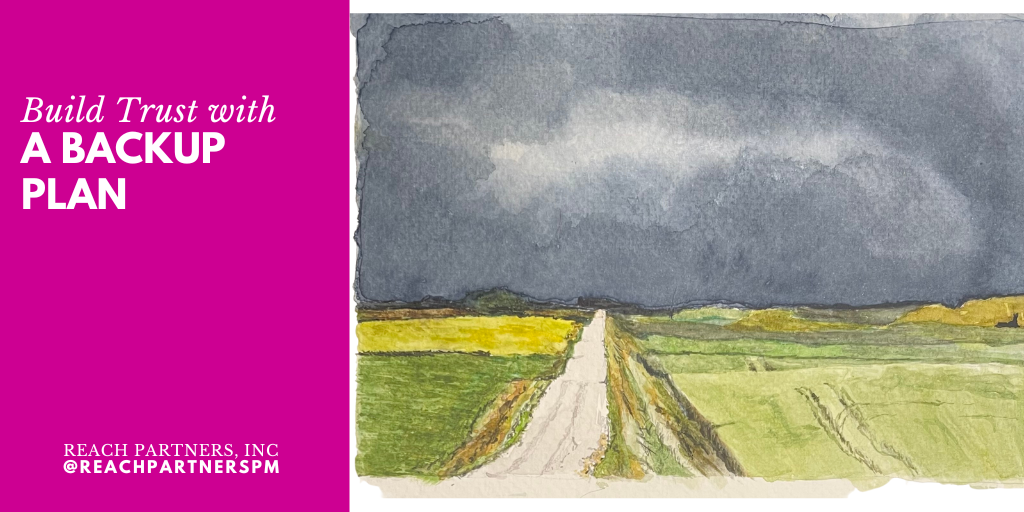|
After completing a post activity report (PAR) for a recent project, Anita and I discussed the wisdom of having a backup plan. Yes, we complete a PAR for every project, which we talk about more here. But this post is really about dealing with yet another winter storm this long winter, and the plan we created to mitigate the risk of weather. Creating a backup plan extends our strategic approach for achieving our client’s goal, which is our most important goal. When we develop a backup solution at the beginning of a project, we can execute an approach that strategically delivers on our client’s goals and purpose. We do this at the beginning when we have the time to think through possibilities to mitigate identified risks. Without a plan, we might miss important objectives, nuances, or the goal itself.
Having a plan may seem ridged, but a plan actually creates flexibility and adaptability because we can nimbly change course with the team’s support. How can you build an effective backup plan? Start with Purpose: In building your backup plan, start with the purpose of the project or activity. Consider what is to be lost or gained, and what alternate activities or tactics can still support the purpose. Consider Costs: A plan that expends too much of any resource – like people-power, funding or time – isn’t a reasonable plan. Just like the purpose, keep in mind the resources needed to implement the backup plan. Consider Probability: Build plans for most likely scenarios only and for what is in your control. It’s not possible to plan for every situation. You can’t plan a calm, pleasant winter day for a meeting, but you can control HOW or WHERE the group will meet. Proactive vs. Reactive: Prepare a backup plan before the risk event. Plan a course of action through focused, collaborative conversation. Agree upon the next steps, identify accountable parties and timelines. Know what triggers a change of plan whether it be bad weather or a change in a speaker or vendor lineup. The benefits of planning for risks means project efficiency and efficacy. It means you can still positively impact your client’s desired outcomes. It also means there are no surprises if and when the undesirable situation arises, and you need to implement a backup plan. Working through a backup plan ahead of time helps you build trust with a team. When you value relationships like we do, that trust is golden. – Rachel
0 Comments
Your comment will be posted after it is approved.
Leave a Reply. |
Reach PartnersYour partners in leadership. Categories
All
Archives
July 2024
|
|
|
Reach Partners, Inc
3330 Fiechtner Dr. Suite 100 Fargo, ND 58103-2321 701-271-8170 Copyright (C) 2024 Reach Partners Inc.
|

